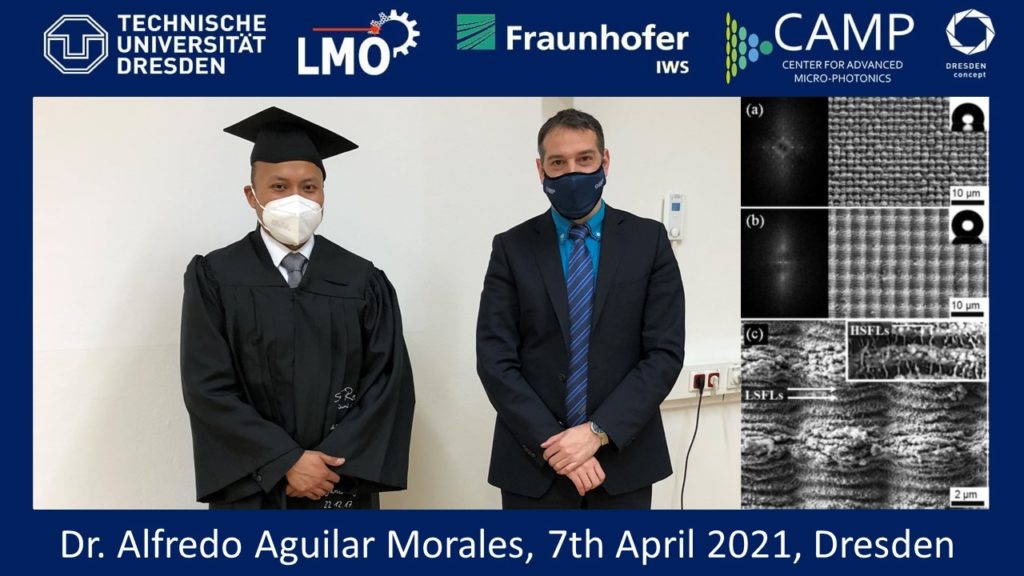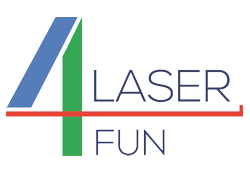On April 7th, 2021, Alfredo Aguilar successfully defended his PhD thesis, titled “Microfabrication of multi-scaled metallic surfaces using Direct Laser Interference Patterning” and was awarded the degree of Doctor.

The work was carried out at Fraunhofer IWS (Dresden), as well as at the Technical University Dresden, both in Germany, under the supervision of Prof. Dr. Andrés Lasagni. The now Dr.-Ing. Aguilar Morales, was an Early Stage Researcher (ESR) of the Laser4Fun project. The public defense ceremony took place with “closed doors” at the Institute of Manufacturing Science and Engineering (IF) of TU Dresden (Germany), with the audience following the event through a video stream.
We congratulate Alfredo for this achievement!
Summary of PhD thesis
Bringing specific functions on surfaces by modifying their topographies is key task in surface engineering. Using laser based surface texturing technologies, such as Direct Laser Interference Patterning (DLIP), it is possible to produce well-defined patterns with elements having feature sizes in the micro- and nanometer range. Therefore, the aim of the PhD thesis is to explore new possibilities and strategies to produce structured surfaces in metals, using laser based approaches. The fabrication of hierarchical line- and pillar-like microstructures was addressed using the DLIP method ns and ps pulses. Based on the measured experimental data, the effect of different laser process parameters on the produced surface texture homogeneity were determined, being the hatch distance a fundamental parameter, while the pulse-to-pulse overlap can be used for efficiently controlling the structure depth. In the case of ps-laser radiation, the DLIP patterns were decorated with different types of LIPSS, producing again patterns with a three-level hierarchy. In addition, multi-scaled microstructures were produced applying DLW to produce micro-cells arrays which were later structured forming pillar-like elements using DLIP. After that, the produced structures were used to control different surface properties, including superhydrophobic structures as well as surfaces capable to reduce the coefficient of friction by 40%.
